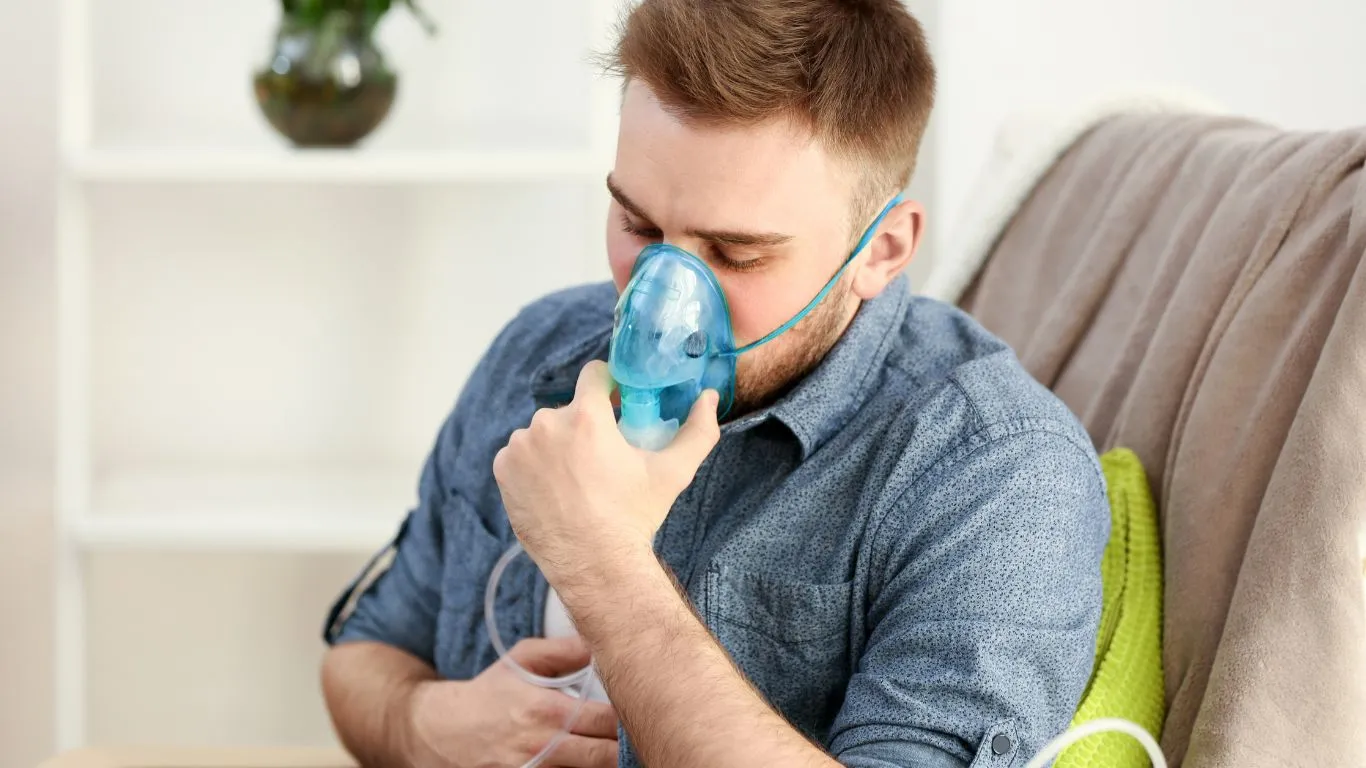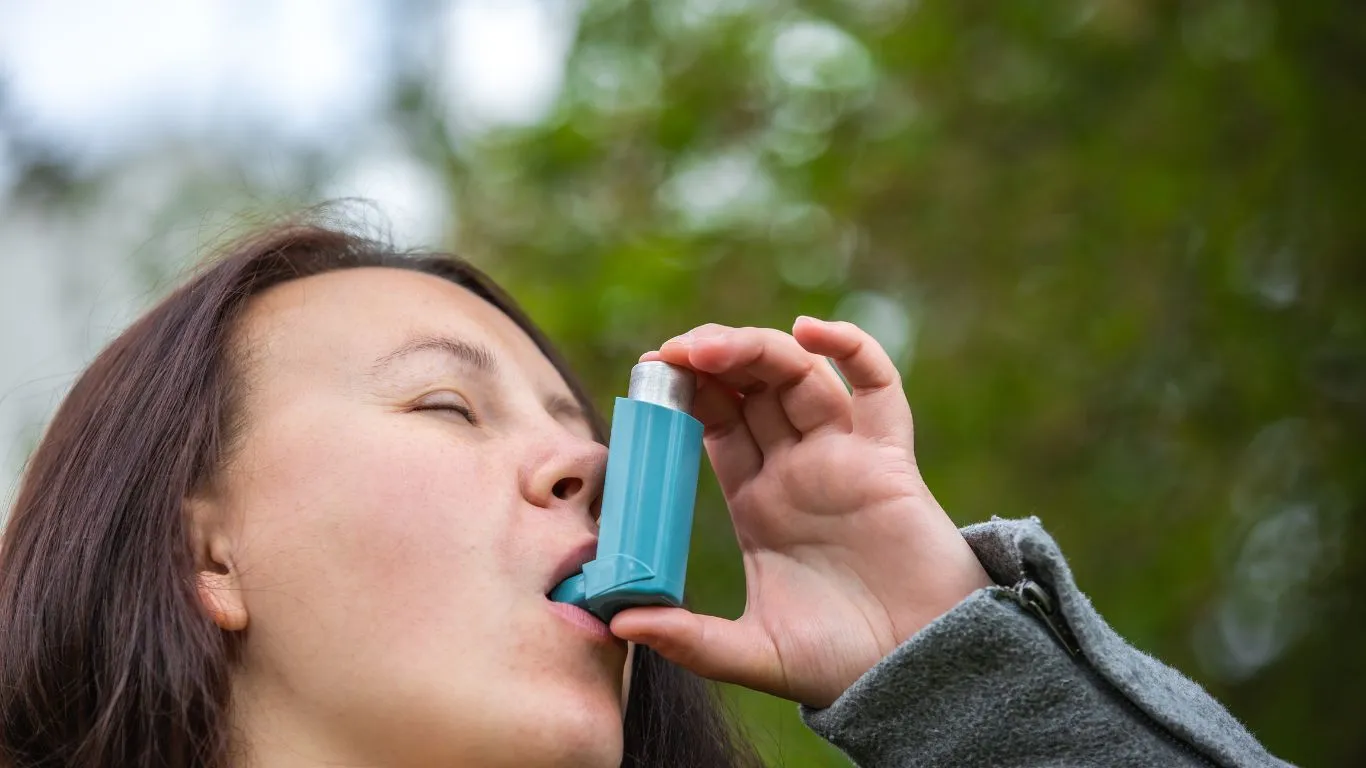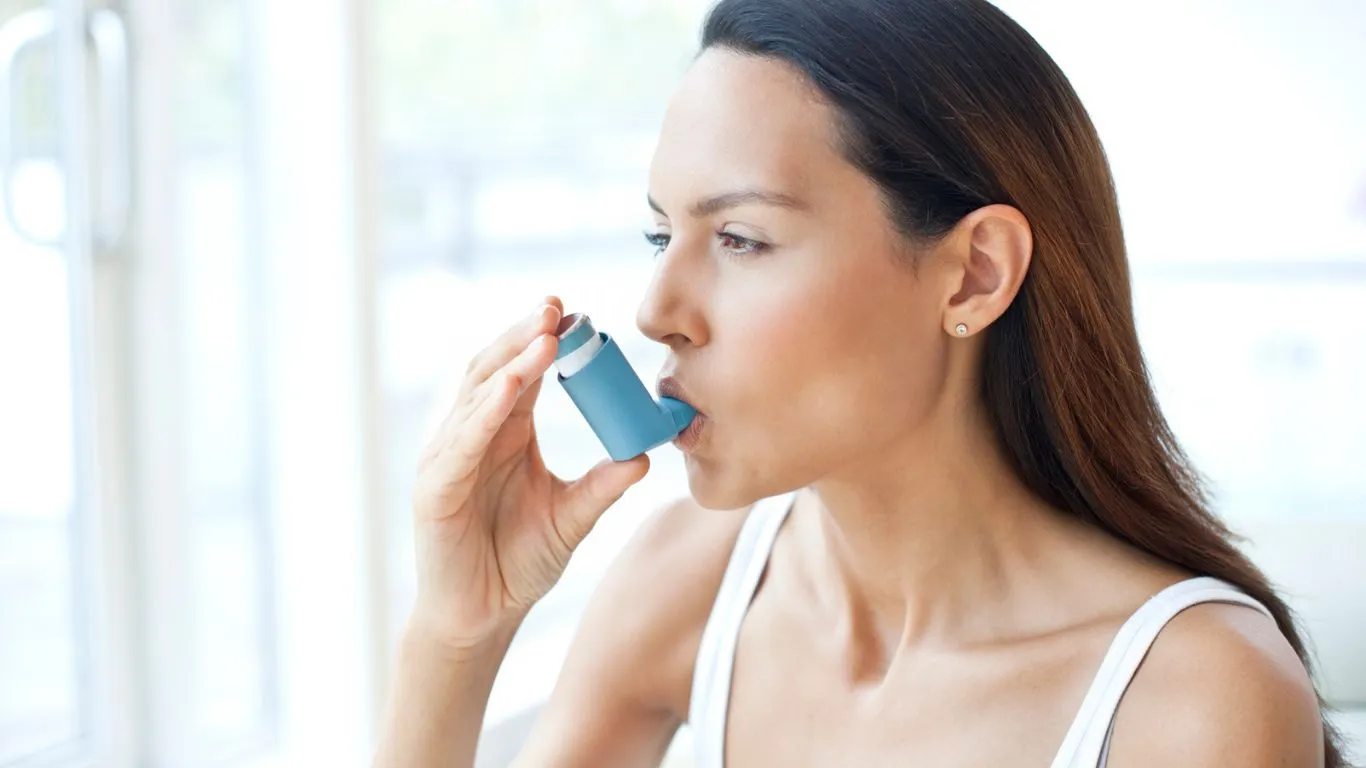Conquer Asthma Flare-Ups During Exercise with These Smart Tips
Managing asthma flare-ups during exercise is something I talk about with my patients all the time. And honestly, I get it—it’s frustrating when you’re trying to stay active and suddenly you’re wheezing, coughing, or feeling like you can’t catch your breath. I’ve seen it firsthand, both in the clinic and out on the trails. Some of my most active patients are also the ones who struggle most with keeping their asthma in check during a workout. But the good news? With the right game plan, it’s totally possible to stay in control.
Why Does Exercise Trigger Asthma Symptoms?

If you’ve ever felt tightness in your chest or started coughing mid-run, you’re not alone. This is something we call exercise-induced bronchoconstriction (EIB). Basically, your airways start narrowing during or after a workout, making it harder to breathe. For people with asthma, this can feel like your lungs are staging a protest.
Now, it’s not that exercise is bad—it’s actually the opposite. Staying active helps build lung capacity and reduce inflammation over time. But during exercise, especially in cold or dry air, your airways can get irritated. This triggers symptoms like:
- Wheezing
- Shortness of breath
- Chest tightness
- Coughing (sometimes a dry cough after the workout ends)
I remember working with a young soccer player who almost quit the sport because she kept having these flare-ups. We adjusted her treatment plan and she’s now back on the field stronger than ever. It’s all about finding what works for your body.
Prepping Before You Sweat: Smart Strategies to Prevent Flare-Ups

Use Your Inhaler the Right Way
If you’ve been prescribed a rescue inhaler (like albuterol), make it your workout buddy. Most people with exercise-induced symptoms should use their inhaler 15–30 minutes before starting any physical activity. But here’s the kicker—many folks skip this or take it too late. I always recommend setting a timer or reminder on your phone, especially if you’re training regularly.
Warm Up—Don’t Skip It
Jumping straight into an intense workout can shock your lungs. I suggest doing a solid 10-15 minute warm-up with light cardio and stretching. This gives your body (and lungs) time to adapt. I’ve had patients who swore their symptoms dropped just by adding a proper warm-up to their routine.
Watch the Weather
Cold, dry air is one of the biggest asthma triggers during exercise. I always tell my patients: if it’s chilly, cover your nose and mouth with a scarf or face mask. It helps warm the air before it hits your lungs. Humidifiers can also be helpful if you’re working out indoors during winter months.
Pick the Right Activities
Not all workouts are created equal for people with asthma. Here are a few activities that tend to be more asthma-friendly:
- Swimming – the warm, moist air in indoor pools is usually easier on the lungs
- Walking or hiking – moderate pace, and you can adjust as needed
- Yoga or Pilates – great for breath control and lung expansion
High-intensity interval training (HIIT) or long-distance running might be tougher for some, but with the right prep, even these can be manageable. I always say, “Let your asthma adjust to you—not the other way around.”
Know Your Triggers and Track Symptoms

Everyone’s asthma behaves a little differently, which is why keeping a symptom log can be a game-changer. Jot down:
- What activity you were doing
- Weather/environment conditions
- When symptoms started (during or after)
- What helped (inhaler, rest, stopping activity)
One of my patients discovered she was only flaring up when she exercised outdoors in the early morning—turned out pollen levels were sky-high at that time. A simple change to evening workouts made a huge difference.
Managing asthma during exercise isn’t about avoiding activity—it’s about being smart, consistent, and tuned in to your body. As someone who’s helped many people (and even dealt with some mild flare-ups myself during hikes), I promise: it’s possible to stay active and still breathe easy.
What to Do When an Asthma Flare-Up Hits Mid-Workout

Alright, let’s say you’ve done everything right—prepped with your inhaler, warmed up, and picked an asthma-friendly activity. But midway through your workout, you start to feel that chest tightness creeping in. What now?
First, don’t panic. Easier said than done, I know. But panic makes you breathe faster and shallower, which only adds fuel to the fire. The best move? Pause what you’re doing, get to a seated or standing position, and focus on slow, deep breaths.
Here’s what I recommend to my patients (and yes, I’ve coached people through this on the sidelines of 5Ks before):
- Use your rescue inhaler right away—two puffs, spaced at least 30 seconds apart.
- Breathe in through your nose and out through pursed lips to slow your exhale.
- Try leaning forward slightly (resting hands on your thighs or a bench) to open your chest.
- Stay calm. Give it a few minutes to let the meds work before resuming activity.
If symptoms don’t ease up in 10-15 minutes—or if they worsen—stop the workout completely and seek medical attention. I always tell my patients: it’s better to stop and breathe easy than push through and end up in the ER.
Building a Long-Term Asthma-Friendly Fitness Routine

One of the biggest mistakes I see is people waiting until their asthma gets worse to make changes. But consistency is key. Building a long-term routine that works with your lungs—not against them—is the secret sauce.
Partner with a Healthcare Provider Who Gets It
This might sound obvious, but it makes a world of difference. Your primary care doc might be great, but they might not always understand the nuances of managing asthma around exercise. That’s where specialists—like pulmonologists or even nurse practitioners like me—come in. I’ve worked with runners, dancers, hikers, even roller derby skaters. The key is tailoring a plan that fits your lifestyle and goals.
Consider a Maintenance Inhaler
If you’re using your rescue inhaler more than twice a week, that’s usually a sign your asthma isn’t under control. I’ve helped plenty of patients transition to a daily corticosteroid inhaler or combination inhaler that prevents inflammation before it starts. You won’t feel the effects right away, but over weeks, it builds a much stronger foundation for exercise.
Strengthen Your Lungs Over Time
This one’s a little more subtle, but super effective: breathing exercises. Think of it like strength training—but for your respiratory system. Here are a few I recommend:
- Diaphragmatic breathing – belly breathing to strengthen your diaphragm
- Pursed-lip breathing – helps control shortness of breath
- Box breathing – used by athletes and even military for breath control
Practice these daily, even when you’re not working out. Your lungs will thank you.
Tips for Staying Motivated When Asthma Slows You Down

Let’s be real: having asthma can be a mental game just as much as a physical one. I’ve had patients break down in tears because they felt like they were constantly starting over. But I always remind them—progress isn’t linear, and neither is managing a chronic condition.
Track Wins, Not Just Symptoms
Yes, it’s helpful to log symptoms, but also keep track of the good stuff. Maybe you ran a little farther this week without needing your inhaler. Maybe your recovery time was faster. Write that down. Celebrate those small wins—they add up.
Join a Supportive Community
Whether it’s an online asthma support group or a local walking club, being around people who get it can be so encouraging. One of my patients even started her own “Breathe & Move” group—low-pressure, meetups for people with respiratory conditions. Now that’s inspiring.
Set Flexible Goals
Instead of saying, “I’ll run 5 miles every day,” try something like, “I’ll move my body for 30 minutes, 4 times this week, in whatever way feels good.” This kind of flexibility gives you room to adjust based on how you’re feeling that day. Trust me, your lungs will appreciate the kindness.
I always tell my patients: asthma doesn’t get to write your story—you do. It might take some trial and error, a bit of patience, and yes, a few inhaler refills along the way. But with the right mindset and tools, exercise can be empowering instead of intimidating. You’ve got this.
Nutrition and Hydration: Underrated Allies in Managing Asthma Flare-Ups During Exercise

One thing I’ve learned over the years—both as a pulmonary nurse practitioner and someone who loves to stay active—is that what you put into your body can influence how your lungs behave. A lot of people don’t realize how much of a difference hydration and nutrition can make when it comes to managing asthma flare-ups during exercise.
Let’s start with water. Dehydration can thicken mucus in the lungs and make it harder to breathe—especially during a workout when you’re already breathing harder than usual. I always tell my patients to drink water throughout the day, not just right before they hit the gym. A little planning goes a long way.
Now, let’s talk food. While there’s no magical anti-asthma diet, certain foods can help lower inflammation and support better lung function. Here are a few staples I recommend:
- Omega-3 fatty acids (salmon, walnuts, flaxseeds)
- Antioxidant-rich fruits and veggies (berries, spinach, bell peppers)
- Magnesium-rich foods (avocados, bananas, legumes)
One of my clients—a marathon walker with mild asthma—noticed fewer flare-ups after cutting back on processed foods and adding more leafy greens and salmon to her meals. It wasn’t an overnight fix, but within a couple of months, her stamina improved and she needed her inhaler less often.
Creating an Emergency Asthma Plan That Works For You

Let’s be honest—nobody wants to think about emergencies, but when it comes to asthma, having a solid plan can literally be life-saving. And I’m not talking about a vague mental checklist. I mean a clear, written action plan that you or someone nearby can follow if symptoms start spiraling during or after exercise.
Here’s what I typically include when I sit down with my patients to map this out:
- Baseline symptoms and typical triggers (like cold air, pollen, or intense cardio)
- Step-by-step medication instructions (which inhaler, how many puffs, when to repeat)
- Warning signs that signal the need for emergency care (lips turning blue, no relief after medication, difficulty speaking)
- Emergency contact information (including primary care provider and nearest hospital)
You can even keep a printed version in your gym bag or with your phone case. Several of my patients also share a copy with their workout buddies, trainers, or family members—just in case. The peace of mind alone is worth it.
When to Re-Evaluate Your Asthma Treatment Plan
Asthma isn’t static. It shifts over time, and so should your treatment plan. I always encourage people to check in with their healthcare provider at least once a year—or sooner if they notice any changes in how their body responds to exercise.
Ask yourself these questions:
- Have I needed my rescue inhaler more than twice a week lately?
- Am I waking up at night due to breathing issues?
- Do I avoid exercise or social activities because of asthma symptoms?
If you answered yes to any of those, it might be time to revisit your plan. I’ve seen people go years just “dealing with it,” not realizing how much better they could feel with a few simple tweaks—whether it’s adjusting medication doses, switching inhaler types, or addressing new triggers.
Asthma management isn’t just about reacting—it’s about staying proactive. And exercise should be a source of strength, not stress.
References
- Asthma and Allergy Foundation of America
- Centers for Disease Control and Prevention (CDC)
- American Lung Association
- National Heart, Lung, and Blood Institute
Disclaimer
This article is for informational purposes only and is not a substitute for professional medical advice, diagnosis, or treatment. Always consult your healthcare provider or a licensed medical professional with any questions you may have regarding a medical condition. As a board-certified pulmonary nurse practitioner, I’ve based the information here on clinical experience and current guidelines, but every individual’s asthma journey is unique.

Bianca Nala is a compassionate Nurse Practitioner with a strong background in primary and respiratory care. As a health writer for Healthusias.com, she combines her clinical expertise with a talent for clear, relatable storytelling to help readers better understand their health. Bianca focuses on topics like asthma, COPD, chronic cough, and overall lung health, aiming to simplify complex medical topics without losing accuracy. Whether she’s treating patients or writing articles, Bianca is driven by a single goal: making quality healthcare knowledge accessible to everyone.






